Protein is the nutritional topic of the decade. It’s been hailed as the king of all macro-nutrients. The goal of this report is to help you understand how much or little protein your body requires and the safest & smartest sources of protein for you to seek.
What Is Protein?
Protein is one of three macro-nutrients along with carbohydrate and fat. Proteins are biological molecules that consists of amino acids.
Proteins are required for the structure, function, and regulation of the body’s cells, tissues, and organs. Each protein has unique functions. Proteins are essential components of muscles, skin, bones and the body as a whole.
Examples of proteins include whole classes of important molecules, among them enzymes, hormones, and antibodies.
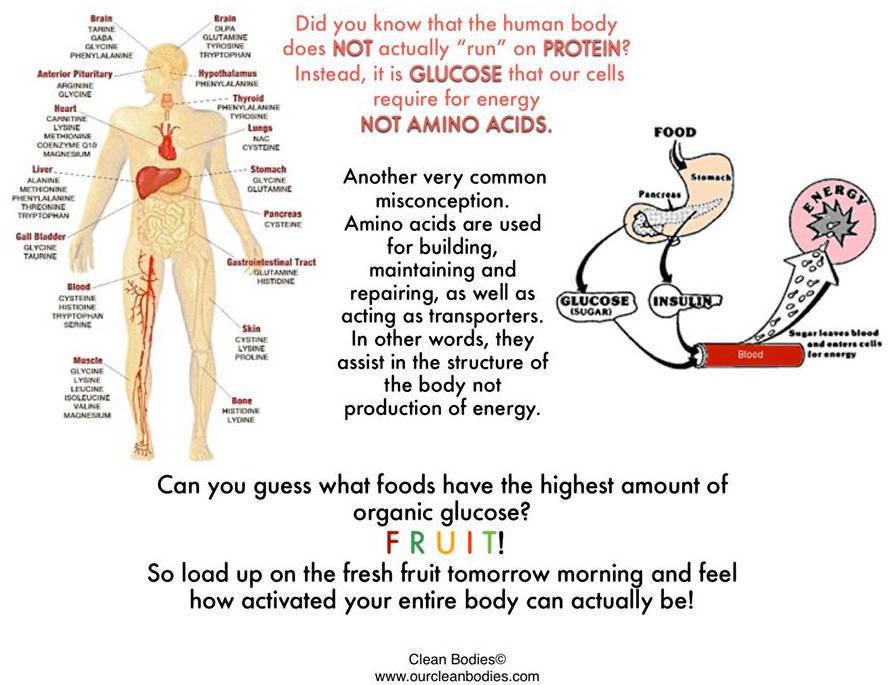
What are Amino Acids?
Amino acids are the building blocks of polypeptides and proteins. The key elements of an amino acid are carbon, hydrogen, oxygen, and nitrogen, though other elements are found in the side-chains of certain amino acids. About 500 amino acids are known and can be classified in many ways.
Of the 22 standard amino acids, 9 are called essential amino acids because the human body cannot synthesize them from other compounds at the level needed for normal growth, so they must be obtained from food.
Click: Plant Sources of Protein Building Blocks (Amino Acids)
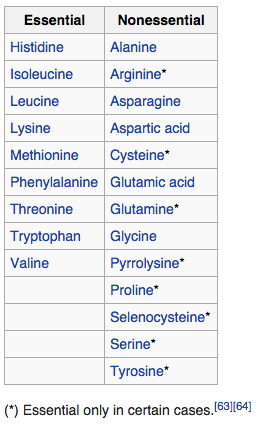
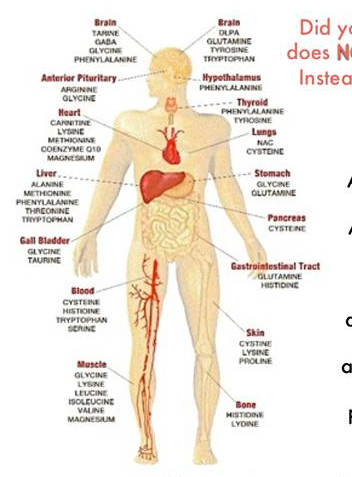
The Complete Protein Myth
The “incomplete protein” myth was inadvertently promoted and popularized in the 1971 book, Diet for a Small Planet, by Frances Moore Lappé. In it the author stated that plant foods are deficient in some of the essential amino acids, so in order to be a healthy vegetarian, you needed to eat a combination of certain plant foods at the same time in order to get all of the essential amino acids in the right amounts. It was called the theory of “protein complementing.”
Modern researchers know that it is virtually impossible to design a calorie-sufficient diet based on unprocessed whole natural plant foods that is deficient in any of the amino acids. (source)
The human body breaks down proteins, pools the amino acids, and restructures them as needed to form new proteins. It is not necessary to eat complete proteins to create complete proteins.
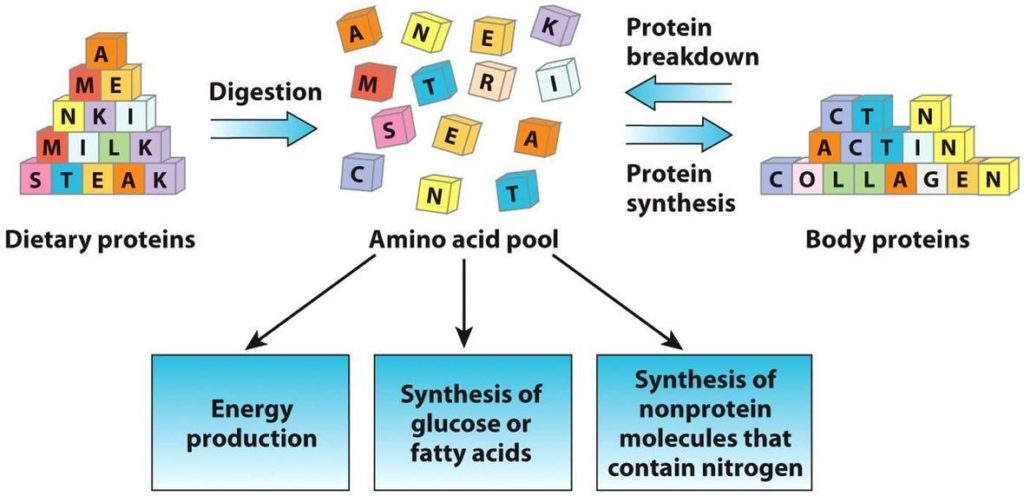
What Are The Best Protein Sources?
“Proteins consist of twenty-two different amino acids, thirteen of which can be synthesized naturally by our bodies. The remaining nine – what we call essential amino acids – must be ingested from the foods we eat. So technically, our bodies require certain amino acids, not protein per se. But these nine essential amino acids are hardly the exclusive domain of the animal kingdom. In fact, they’re originally synthesized by plants and are found in meat and dairy products only because these animals have eaten plants.
Admittedly, plant-based proteins are absorbed differently than animal proteins. And not all plant-based proteins are “complete”, containing all nine essential amino acids – two arguments all too often raised to negate the advisability of shunning animal products. But in truth, a well-rounded whole food plant-based diet that includes a colorful rotation of foods like sprouted grains, nuts, seeds, vegetables, and legumes will satisfy the demanding protein needs of even the hardest training athlete – without the saturated fat that gives us heart disease, the casein that has been linked to a variety of congenital diseases, or the whey – a low grade discard of cheese production.” (source)
Learn more: The Dangers of Dairy
Learn more: No Whey!
Learn more: Choosing the Safest Fats, Carbs, and Proteins
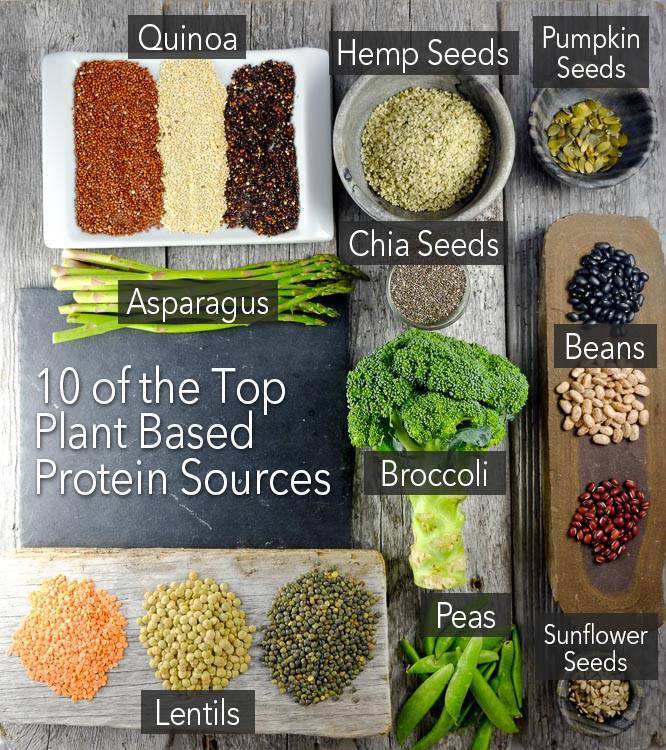
What About Protein Overconsumption?
While protein deficiency is rare, interestingly there is ample evidence in America of animal protein over-consumption. The formation of kidney stones, gout, Type 2 diabetes, cardiovascular disease, and metabolic syndrome are all related to urate crystals forming when uric acid is not metabolized during purine (animal protein) digestion. Animal proteins are very acidic in nature and lead to inflammation in the internal body environment.
Calcium urate crystals can form when the body pulls calcium from bones & teeth to neutralize the acidity of animal protein digestion which then can give rise to arthritis, rheumatism, bursitis, high blood pressure, osteoporosis, and varicose veins.
Learn more: Johns Hopkins on Health & Environmental Implications of Animal Consumption
Eating whole plant foods safely provides ample protein to meet your body’s requirements without risking the detriments of protein overconsumption.

How To Calculate How Much Protein You Need
WebMD.com recommends a minimum of 10% of daily calories from dietary protein with a maximum set at 35%. A researched article on Livestrong.com suggests athletes should consume between 10-15% of their daily calories from protein. Dr. Douglas Graham, athletic trainer and author of The 80/10/10 Diet, recommends a maximum of 10% of daily calories from protein.
Adult women need about 46 grams a day (71 grams, if pregnant or breastfeeding). Adult men need about 56 grams a day. Babies need about 10 grams a day. School-age kids need 19-34 grams a day. Teenage boys need up to 52 grams a day. Teenage girls need 46 grams a day. (source)
And despite what you might have been told, more protein isn’t better. Satisfy your requirement and leave it at that. With respect to athletes, no scientific study has ever shown that consumption of protein beyond the RDA advised 10 percent of daily calories stimulates additional muscle growth or expedites physiological repair induced by exercise stress. In fact, and over the long-term, excessive animal protein intake can be harmful. Not only is there evidence that it is often stored in fat cells, it contributes to the onset of a variety of congenital diseases such as osteoporosis, cancer, impaired kidney function, and heart disease.
Still not convinced? Consider this: some of the fiercest animals in the world are plant powered. The elephant, rhino, hippo and gorilla share one thing in common – they all get 100% of their protein from plants. (source)
Learn more: 57 Health Benefits of a Plant-Based Diet
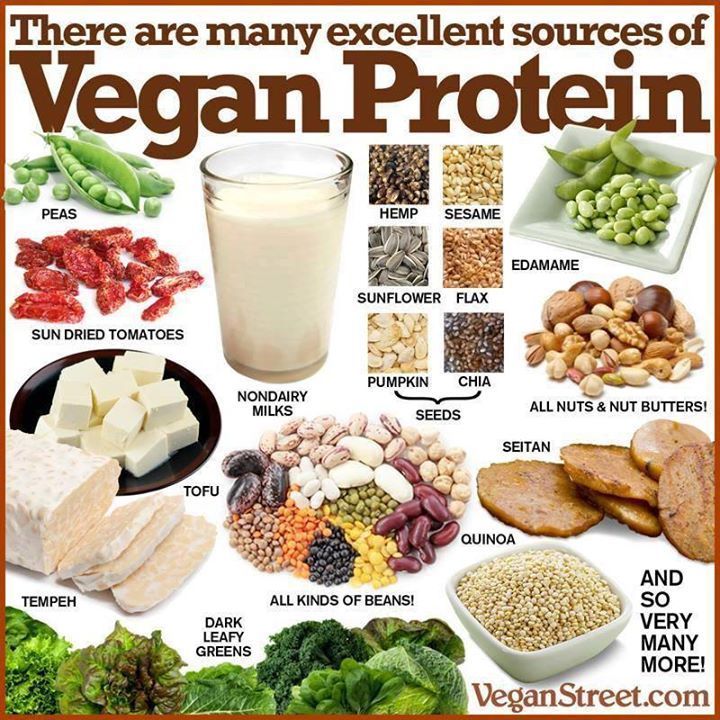
Environmental & Animal Concerns When Choosing Protein
No longer is it responsible to make dietary choices for ourselves without taking into consideration the effect those choices have on the planet and all of her living creatures.
There is no human nutritional need for meat, dairy, or eggs. When plant sources can provide us with all our necessary nutrition to thrive, it is unconscionable to enslave and kill sentient animals and pollute our planet for selfish desires, flavors, and habits. When ample whole plant food are accessible and affordable, for many reasons they are the preferred choice for health, planet, people, and animals.
Learn more: Nutrition Only in Animal-Based Foods
Learn more: 21 Previously Unknown Reasons Why The World Needs You to Eat Vegan Today (And It Has Nothing To Do With The Animals)!
Learn more: Is Eating Meat Selfish?
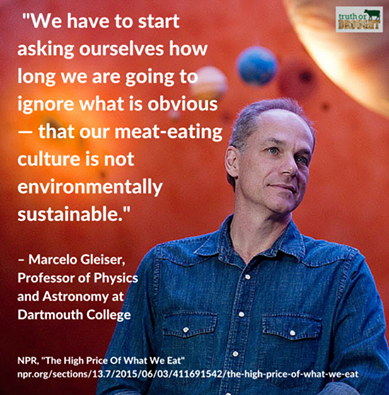
The Bottom Line
America’s #1 killer, heart disease, currently kills 1 out of every 3 Americans. 70% of Americans are obese and getting fatter and studies forecast that by 2030, 50% of Americans will be diabetic or pre-diabetic. Animal foods and highly processed (low/no fiber) foods are detrimental to good health.
Did you know that only 3% of Americans are protein deficient (malnourishment, anorexia) while 97% of Americans are fiber deficient? Meat, dairy, and eggs have no fiber. Fruits, vegetables, grains, legumes, nuts, and seeds have ample fiber to keep your digestive tract clean and well functioning all while providing ample protein to meet your daily needs.
Choose whole plants. Avoid animal foods.
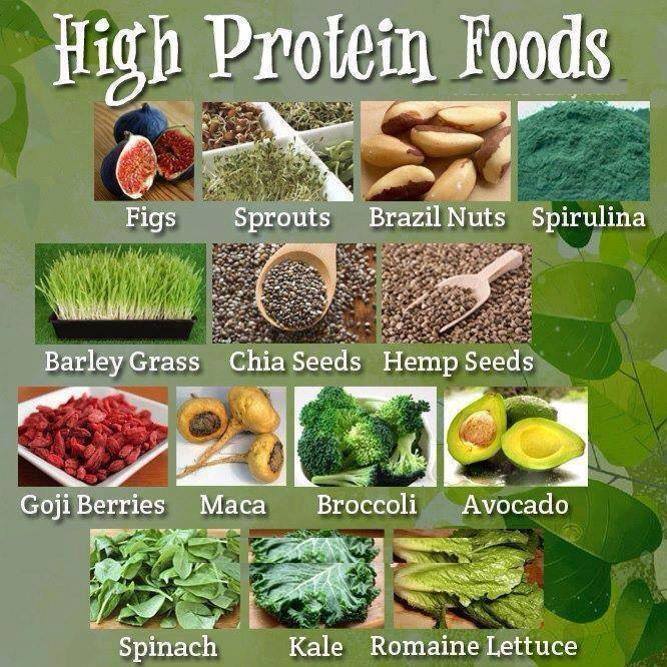
Additional Resources
• Podcast & Show Notes: Our Misplaced Obsession with Protein: Garth Davis, MD on High Fat, Low Carb Diets, Bad Science & How to Separate Nutritional Fact from Popular Fiction
• Book: Proteinaholic – How Our Obsession with Meat is Killing Us and What We Can Do About It by Dr. Garth Davis
• Article: Dr. Dean Ornish on The Myth of High-Protein Diets
• Article: Is Alzheimer’s Disease Cardiovascular Disease?
• Article: Is the Brain Fueled by Fat, Protein, or Carbs?
• Article: The Myths & Metaphysics of Protein
• Article: Can Plant-Based Eating Provide Sufficient Protein?
• Health Documentary: Forks Over Knives
• Environmental Documentary: Cowspiracy
• Animal Rights Documentary: Earthlings
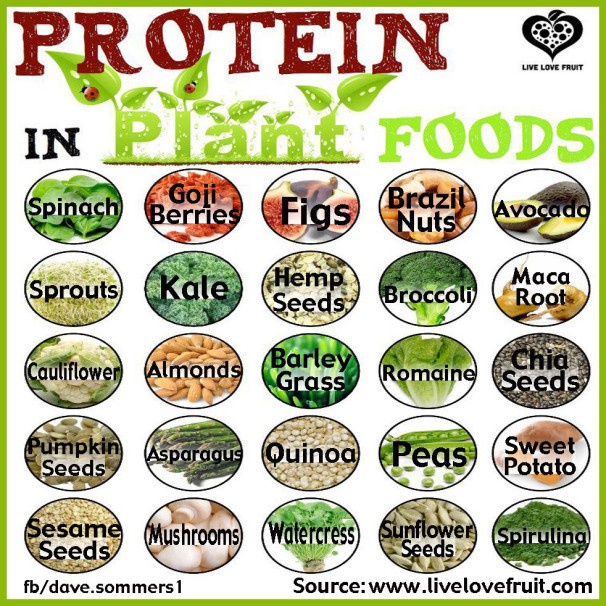
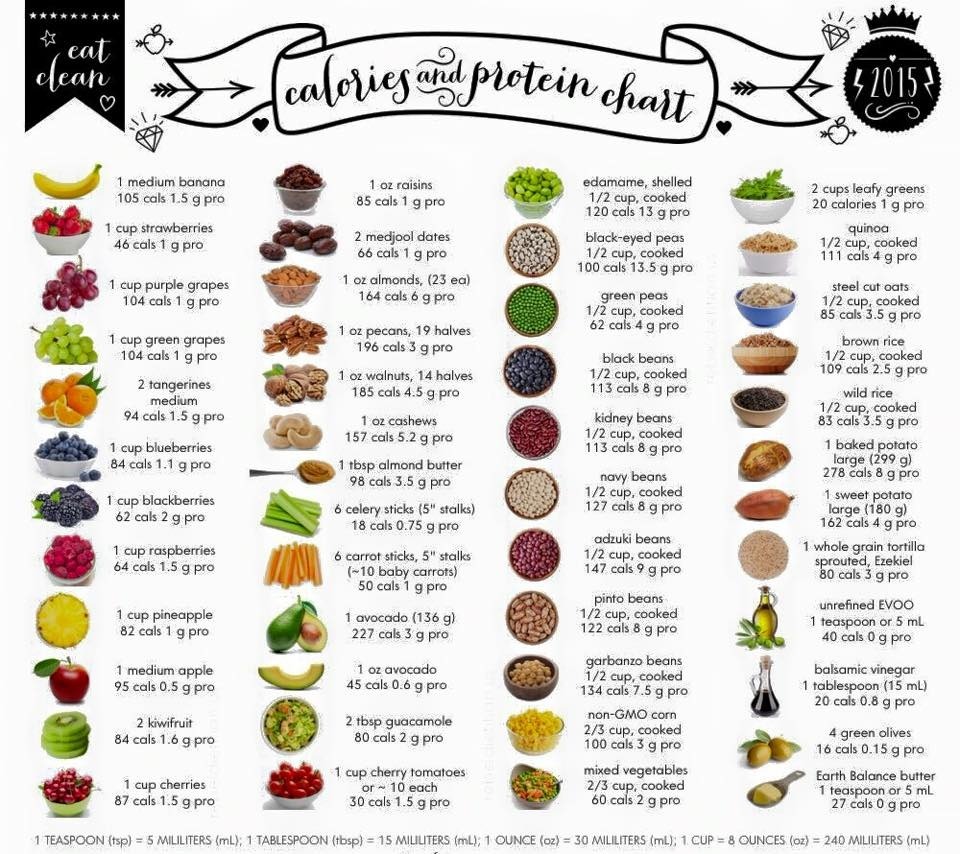
All artwork displayed is property of the artist. Efforts have been made to attribute artwork to artists.

{ 3 comments… read them below or add one }
Thanks for the valuable charts and information, Carla.
You’re welcome John. Thanks for visiting!
Great and informative article! Remember and used Diet For a Small Planet! The 70s tried to teach but had lots to learn!